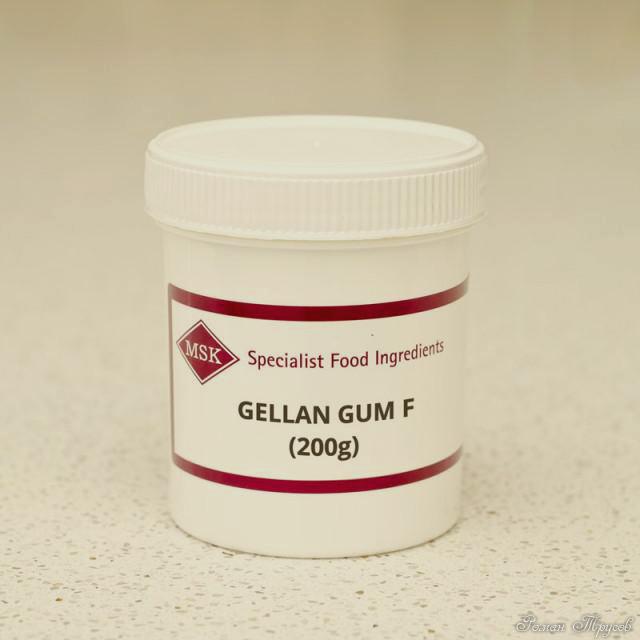Gellanovaya gum - another food additive, which has gelling and stabilizing properties. Also known as additive E418. It is used both as a thickener and gelling agent. In addition, it can act as a foam stabilizer. E418 looks like a yellowish powder or white.
Where does the gellan gum
E418 also known as gellan gum. This polysaccharide which naturally occur in microorganisms Pseudomonas elodea, but artificially synthesized industrial purposes. Cultures of microorganisms grown on the sugar-containing substances, is filtered and pasteurized. After treatment with an alcoholic solution obtained resin is dried and supplement to its normal form of a powder. Also, in some cases it is treated with alkali.
The basic structure of E418
Glucose.
Rhamnose.
Glucuronic acid.
The main properties of the additive
When heated to 75-95 C nizkoatsetilirovannaya gellan gum is readily soluble under cooling to 10-50 C also shows its gelling properties. Melting at high temperature of 80-140 C. It goes well with other thickeners, so often used E418 gums and other food additives - this improves the properties of the finished product.
Depending on the content of acetates gellan gum provides a soft and flexible jelly or more hard and brittle.
Tip! Try to connect its different types to achieve the desired texture.
Gels based gellan gum are unique in that they do not lose their properties and structures, even under agitation in a blender.
This food additive behaves stably in a medium with a pH of 3.0 to 10.0, medium strength alcohol (50% alcohol). Gelling improved quality nizkoatsetilirovannoy gum with potassium ions, calcium, magnesium and sodium.
E418 in the molecular kitchen
This texture is often used in molecular gastronomy chefs because it helps give everyday products spectacular form. For example, using nizkoatsetilirovannoy gellan gum can be made of transparent noodles chicken broth.
You can use it instead of the agar-agar. The difference between them lies in that it can withstand higher temperatures and it must be less than a factor of 2 to form a gel with the same viscosity.
An interesting recipe for beetroot gel
You will need:
• 10 pieces. Medium sized beet;
• 5 g of salt;
• 0,5 g ksantovoy gum;
• 5 g of gellan gum;
• 100g of balsamic vinegar.
1. Clear the beets and cut into cubes.
2. Use a juicer squeezing the juice and filter.
3. Mix in a separate container salt, gellan gum and ksantovuyu and added to the beet juice and vinegar.
4. Gray mixture over medium heat and pour into a shallow pot. When, after cooling, the gel will seize, mix in a blender until smooth.
As a result, we obtain a gel-like mass that can be used to decorate dishes or their foundation.
Effects on the body
Gellan gum is not absorbed by the body and is not split, but simply displayed through the intestines. It is believed that this beneficial effect on its permeability.
Some sources recommend to be very careful with the use of this additive, arguing that it is very harmful to humans. However, no reliable information on hazards E418 not. Food additive approved for use in the CIS and Europe. Therefore moderate consumption is likely to not worsen overall health.
